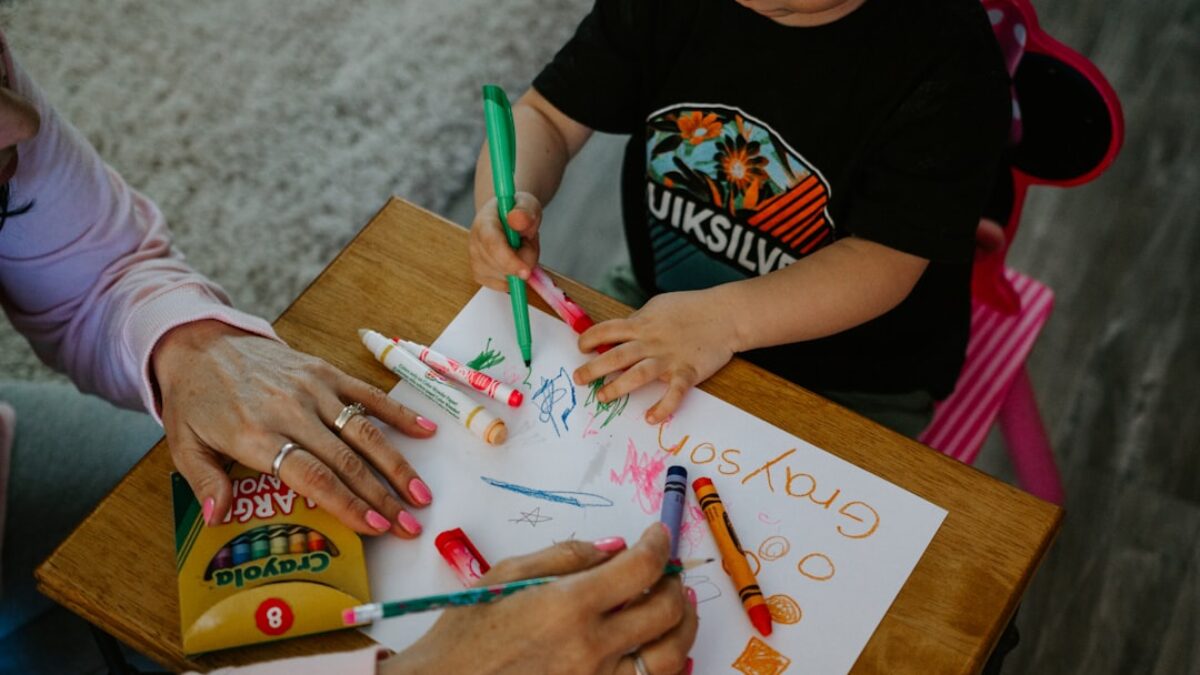Teenagers today swim in a 24-hour stream of notifications, viral challenges, and algorithm-curated content. For Muslim educators and parents, the challenge is not merely to teach Islam, but to make faith feel alive amid the digital noise. This article offers field-tested approaches that blend timeless Qur’anic wisdom with contemporary tools, helping adults connect, not just correct teens as they grow into confident, practicing Muslims.
Understanding the Digital-Native Teen
The Psychology Behind Screen Attachment
Research from the Pew Research Center shows that 95% of U.S. teens own or have access to a smartphone, and nearly half say they are online “almost constantly.” Behind these statistics lie three core psychological drivers:
- Identity exploration: Adolescence is a search for “Who am I?” Online spaces allow rapid experimentation with personas.
- Social validation: Likes, shares, and comments offer instant feedback loops that rival parental praise.
- Dopamine reward cycles: Apps are engineered to trigger micro-rewards every few seconds, training the brain to prefer short-form content.
Understanding these mechanisms allows us to design faith experiences that satisfy the same needs in Islamically constructive ways.
Islamic Worldview vs. Digital Culture Clash
Digital culture often glorifies individualism, instant gratification, and surface-level relationships. Islam, by contrast, emphasizes community, delayed gratification, and deep accountability to Allah. The task is not to reject technology, but to reclaim it as a mubāḥ tool that can be channeled for khayr (good).
Key Components of Effective Digital-Age Islamic Education
Relatable Content Design
Content must mirror the language, humor, and visual style teens already consume, while embedding authentic Islamic knowledge.
- Storytelling over lecturing: Qur’anic parables, Ṣaḥābah anecdotes, and contemporary reversion stories resonate more than bullet-point fiqh rulings.
- Micro-learning: Break complex topics (e.g., tahārah, tajwīd) into 60-second reels or TikTok-length clips.
- User-generated challenges: Invite teens to create #MyAyahOfTheDay or #30DaysGoodDeed reels, turning passive viewers into active teachers.
Interactive Platforms & Tools
| Platform | Islamic Use-Case | Key Feature for Teens |
|---|---|---|
| Discord or Guilded | Private study circles, Qur’an buddy rooms | Voice channels + screen-share for tajwīd labs |
| Instagram Reels | 60-second ḥadīth gems, duʿā reminders | Visual templates + trending audio |
| Notion or Trello | Ramadan goal tracking, Ṣadaqah planners | Drag-and-drop boards for gamified progress |
| Roblox Studio / Minecraft | Build virtual masjid tours, historical Makkah | Creative mode fosters ownership |
Authority Figures Who Speak Teen
Teens tune out adults who feel out of touch. Effective messengers often share three traits:
- Proximity in age: Youth mentors (18–25) who recently navigated high school themselves.
- Authenticity: They openly discuss doubts and past mistakes, showing that struggling with faith is normal.
- Digital fluency: Comfortable switching from Qur’anic Arabic to meme references in one sentence without sounding forced.
Benefits and Importance
Strengthening Core Identity
When teens see Islam reflected positively on the same platforms where they watch gaming streams, their faith becomes integrated, not compartmentalized. The result is a “digital fitrah”—an instinctive filter that evaluates online trends through an Islamic lens.
Reducing Cognitive Dissonance
Many Muslim youth experience silent guilt: “I post Islamic quotes, but then I scroll past questionable content.” Interactive Islamic education provides them with practical strategies (e.g., muting inappropriate accounts, scheduling dhikr reminders) that align online behavior with inner convictions.
Creating Peer-Led Safe Spaces
Moderated online groups become virtual youth clubs where teens ask “awkward” fiqh questions anonymously, share Eid outfit ideas, or arrange local iftār meetups. The sense of belonging reduces the temptation to seek identity in toxic online subcultures.
Practical Applications
Step-by-Step: Launching a Teen-Focused Islamic Discord Server
1. Pre-Launch Planning
- Define the purpose: Qur’an memorization, fiqh Q&A, or general social support?
- Recruit a diverse admin team: Include a ḥāfiẓ, female youth mentor, and tech-savvy teen moderator.
- Design server rules with teen input: Zero tolerance for bullying, but allow respectful political debate.
2. Channel Architecture
| Channel Name | Function | Example Activity |
|---|---|---|
| #daily-ayah | Bot posts random āyah; teens reflect in thread | User @Amira: “This āyah about patience hits different right before exams.” |
| #halal-meme-stash | Islamic humor, strictly moderated | Template: Distracted boyfriend labeled “me,” girl labeled “TikTok,” new girl labeled “Fajr.” |
| #voice-tajweed-lab | Small group recitation circles | Weekly 15-minute ḥalaqah led by ḥāfiẓ; peers give constructive feedback. |
3. Engagement Hooks
- Weekly challenges: “Record a 30-second clip explaining why Surah Al-ʿAṣr is the ultimate productivity hack.”
- Role-based gamification: Level-up roles from “Seedling” to “Ghāzi” based on contributions.
- Real-life bridge events: Quarterly in-person picnic if the server hits 300 active members.
Case Study: The Instagram Reel That Went Viral
A youth group in Dallas created a 15-second Reel showing a teen waking up for Fajr, overlaying trending audio “I’m up!” The caption read:
“All-nighter? Nah. My Lord scheduled a private meeting at 5:27 AM. #FajrWave”
Results:
- 1.2 million views in 72 hours
- 4,000+ new followers on the masjid youth account
- 40 teens signed up for their sunrise ḥalaqah the following week
The secret sauce was authentic storytelling: the star was an actual 11th grader, not an adult actor, and the caption used slang naturally.
Building a Parent-Teen Tech Agreement
Rather than unilateral screen-time limits, co-create a mutual accountability pact:
- Shared goals: “We both aim to finish reading Qur’an translation together this Ramadan.”
- Transparency tools: Parents install the same app-blocker (e.g., Opal) and share stats weekly.
- Reward system: Completing a week without missing Ṣalāh = family hike + smoothie treat.
Frequently Asked Questions
What if my teen refuses to join any Islamic digital space?
Start offline. Schedule a tech-free icebreaker—a paintball outing or escape room—with a short, optional duʿā circle at the end. After the shared positive experience, casually mention, “We also have a private server where we drop memes and reminders.” The invitation feels like an extension of the fun, not a chore.
How do we protect teens from inappropriate content on these platforms?
Use a layered safety model.
- Technical layer: Enable Discord’s AutoMod, add trusted bots (e.g., Dyno) to filter NSFW words.
- Human layer: At least one adult moderator online during peak teen hours (8–11 PM).
- Cultural layer: Establish a “see something, say something” norm where teens themselves flag questionable content, earning badges for responsible citizenship.
Can girls and boys interact in the same server?
Yes, with Islamic etiquette guardrails. Create gender-specific channels for personal topics (e.g., #sisters-health-chat, #brothers-fitness) while keeping #general open to all. Appoint at least one female admin to monitor tone. The key is purpose-driven interaction—all conversations should tie back to learning or community service.
How do we measure spiritual growth in digital spaces?
Shift from vanity metrics (likes, shares) to engagement quality:
- Retention: How many teens return weekly for Qur’an study?
- Peer mentorship: Count how many originally silent members begin answering fiqh questions.
- Real-world impact: Track Ṣadaqah drives, volunteer sign-ups, or masjid attendance originating from online calls to action.
What about teens who feel guilty for past online behavior?
Frame repentance as a shared journey rather than a scolding session. Host a “Digital Tawbah Workshop” where an older youth speaker narrates their own story of deleting 2,000 photos from questionable parties. End with a collective dhikr session and a practical checklist (unfollow toxic accounts, set daily Qur’an time). The communal setting normalizes growth and reduces shame.
How can parents upskill quickly to guide their teens?
Use the 15-minute micro-learning rule:
- Follow @MuslimYouthTech on Instagram; save one tip daily.
- Join a 4-week online crash course (e.g., Yaqeen Institute’s “Parenting in the Digital Age”).
- Pair up with another parent to hold each other accountable—text screenshots of your newly learned settings.
Is it permissible to use music in Islamic content aimed at teens?
The safest route is instrumental nasheed or royalty-free ambient beats that avoid melodic resemblance to chart-toppers. Many scholars allow light percussion (duff) for educational purposes when the maqsad (purpose) is to attract hearts to Islam. Always include a disclaimer caption: “Background beat used under scholarly guidance; feel free to mute if preferred.”
Conclusion
Engaging teens with Islam in the digital age is less about mastering every app update and more about re-engineering the human connection at the heart of every platform. When we combine authentic scholarship with the creativity of youth, the screen becomes a mihrab where hearts turn toward Allah. Begin with one small experiment—maybe a
























Post Comment